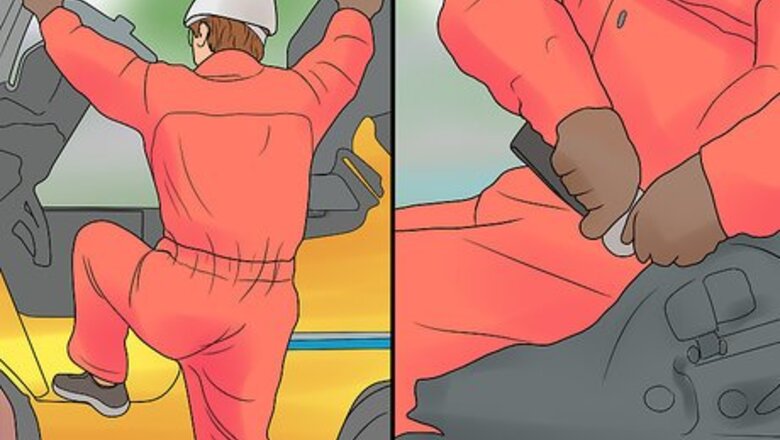
views
X
Research source
After practicing how to drive and learning how to handle the forklift, you’ll be able to lift and carry heavy loads with ease. Just be sure to check with your country’s department of health and safety to see if you need an operator’s certification before driving a forklift.
Performing Basic Operations
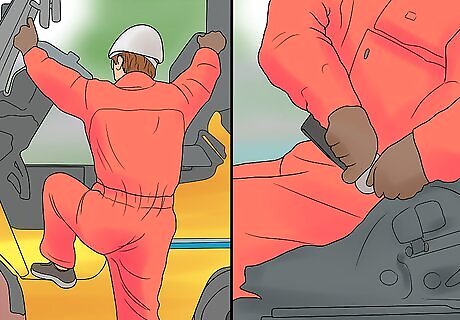
Climb into the forklift and buckle the seatbelt. Board the forklift from the left side. Grab the handhold near the front of the cab with one hand and the back of the seat with your other. Put your foot on the step and lift yourself up into the seat. Once you’re sitting down, buckle your seatbelt so you’re safe. Never grab the steering wheel while you’re pulling yourself into the cab. If you’re in a standing forklift, make sure to put on the safety harnesses once you’re inside.
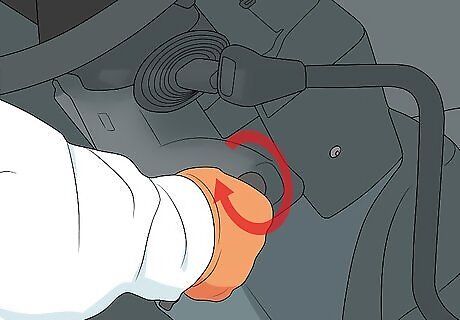
Turn the key to start the forklift. Find the shifter lever under the left side of the steering wheel. Make sure the lever is in the center position so it’s in neutral. Locate the emergency brake lever on the left side of the machine and make sure it’s pulled down and activated. Put the key into the ignition on the right side of the steering column and turn it forward to start the forklift’s engine.
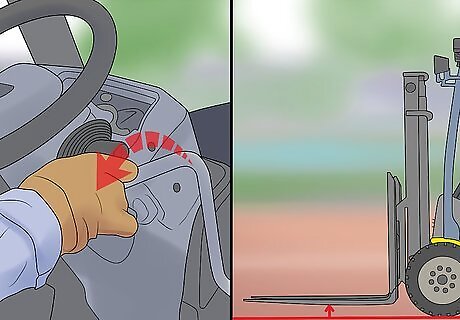
Lift the fork up by 2–4 in (5.1–10.2 cm) with the control levers. Your forklift should either have 1 or 2 black levers that control the height and tilt of the fork located to the right of the steering wheel. Pull the lever to raise the fork’s 2 tines off the ground by 2–4 in (5.1–10.2 cm) so they don’t scrape the ground while you’re driving. If you want, you can also tilt the tines backward to raise them even further. Each forklift operates differently, so look at the forklift manual before operating any of the levers so you know exactly what they do.
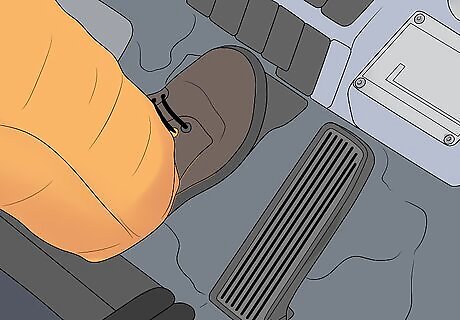
Depress the brake pedal on the left of the accelerator pedal before releasing the emergency brake. Press the brake pedal with your right foot before pushing the lever for the parking brake forward. Keep your foot on the brake pedal or else the machine may move. Make sure nobody is on either side of you within 10 feet (3.0 m) when you start driving.
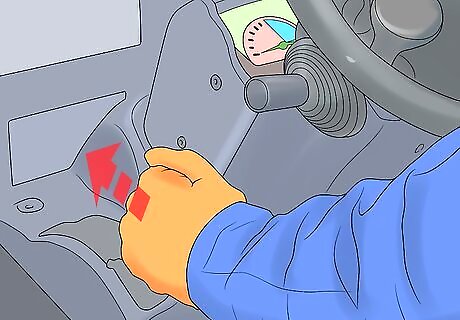
Use the shifter to change the direction you’re driving. Push the shifter forward to drive or pull it back if you want to go in reverse. Keep your foot on the brake pedal while you shift so you don’t move around. Whenever you are stopped, put the shifter back into the middle position to change it into neutral.
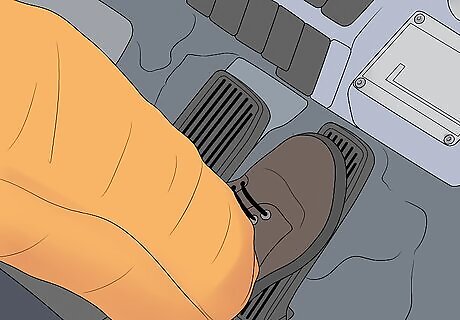
Press on the accelerator to move. The accelerator is located beneath the steering wheel on your right, just like the inside of a car. Lightly press on the accelerator with your right foot to start moving. Maintain a slow speed at first until you’re used to handling the machine. If you’re driving in reverse, make sure to always look behind you so you know where you’re going. Some forklifts have a forward and reverse pedal. Check the machine’s manual to check what type of forklift you’re driving.
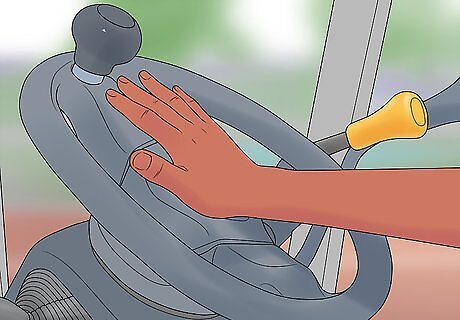
Honk your horn when passing through busy areas. The button for your horn should be in the center of your steering wheel, similar to a car horn. If you’re driving in a tight area with frequent traffic, use the horn so others know that you’re passing by. Honk the horn whenever you come to an intersection. That way, people who are crossing will know that you’re coming.
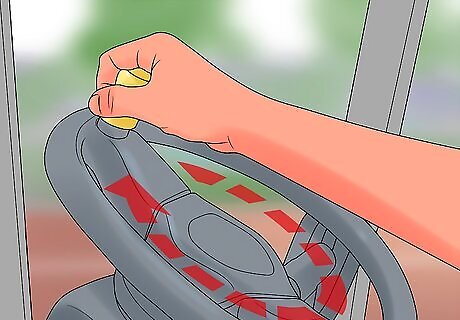
Turn the steering wheel in the direction you want to go while you’re driving. Grab the knob on top of the steering wheel to control it better. Spin the wheel in the direction you want to turn. When you want to make a turn at a sharp angle, wait until the back of the tines reaches the corner before starting your turn.Tip: Forklifts make tighter turns when you’re going in reverse since they have rear-wheel steering. Start making a right-angle turn when the front wheels are 3 feet (0.91 m) away from the corner.
Loading the Forklift
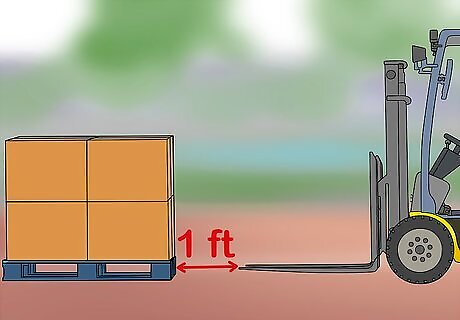
Stop your forklift when you’re 1 ft (0.30 m) from the load. When you’re in front of the load that you want to pick up, press the brake pedal so you come to a complete stop. Shift gears into neutral and turn on the parking brake. Never adjust the fork unless you’re in neutral and the parking brake is on.
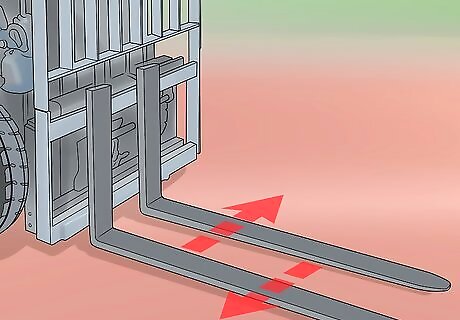
Adjust the width of the tines if you need to. Loosen the nuts on top of each fork by turning it counterclockwise if your forklift has them. Lift the tine and slide it left or right to adjust the width. Set the width of the tines to about half of the load’s width. Make sure teach tine is the same distance from the center of the machine so your load stays balanced. Some forklifts will have a lever inside the cab to automatically adjust the tines while other forklifts require you to manually change the width. Check with the operator’s manual to determine what you need to do.
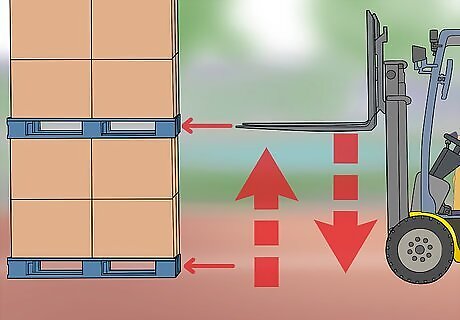
Raise or lower the forks to match the height of the pallet openings. Make sure the tines on your forklift are level before adjusting the height. Use the lever on the right side of your steering column to raise or lower the tines to the load height. Only adjust the height of the fork while the parking brake is activated and the forklift is in neutral. Make sure the load is stable and has a low center of gravity. Making Sure Your Load is Stable The heaviest objects should be on the bottom of the load. Heavier objects should be closer to the cab of the forklift than lighter objects. Stack your items so they're centered in the pallet.
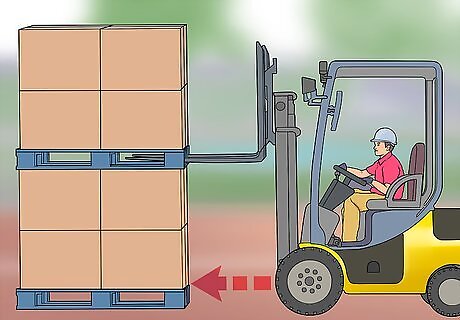
Drive forward until the fork is completely inserted in the pallet. While your foot is on the brake, shift the gear into the forward position and release the parking brake. Slowly move forward to insert the tines into the pallet openings. Continue driving forward until the tines are all the way inside the pallet. Then, shift back into neutral and activate the parking brake. Some forklifts have an inching pedal to the left of the steering column so the machine moves slowly. Press down on the inching pedal instead of the accelerator for more control over your movements at a slow speed.
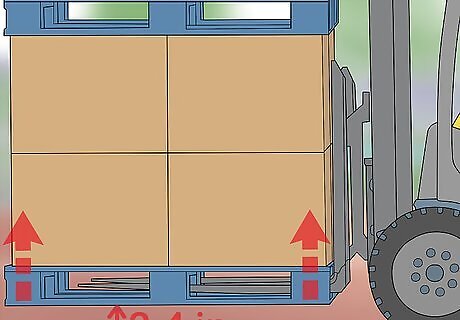
Lift the load at least 2–4 in (5.1–10.2 cm) off the ground. While the parking brake is activated and the forklift is in neutral, lift or lower the load so it’s low to the ground. That way, you have fewer chances of tipping over or losing control. If you’re lifting a load off of a shelf or stand, reverse away from where it’s raised before lowering it. Use your horn whenever you go in reverse to let others know you’re backing up.
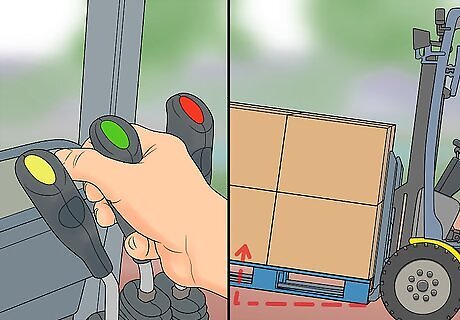
Tilt the mast back until the load is stable. Use the lever to tilt the mast back to decrease the chance of tipping over. If the load is unstable or shifts around easily, strap it down to the pallet. Don’t tilt the mast forward unless you need to put the fork underneath a load.
Unloading the Forklift
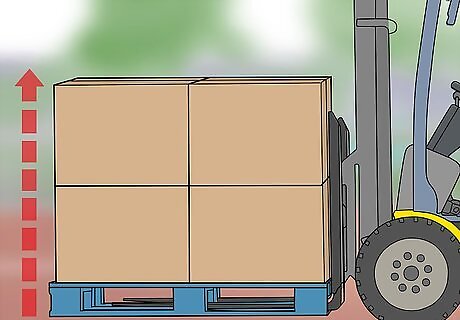
Position the mast in the vertical position. When you reach the location where you need to drop off the load, push the lever that controls the tilt forward to make the mast vertical again. Otherwise, you’ll lift or set your load down crooked.
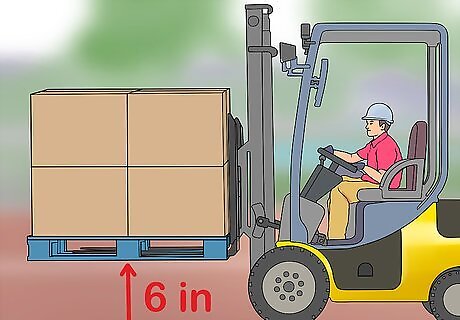
Raise the load 6 in (15 cm) taller than the area you want to drop it. Make sure you have the parking brake on and the forklift in neutral while you adjust the height. Leave at least 6 inches (15 cm) between the forks and the place where you’re setting the load. If you’re dropping the load on the ground, you don’t need to adjust the height since it should already be just above the ground.
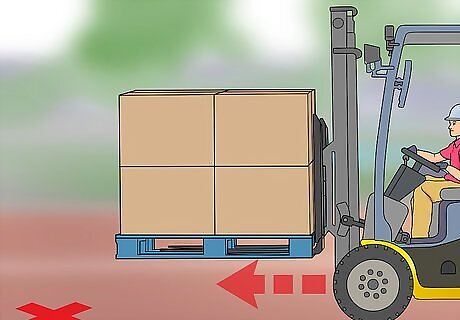
Drive the forklift slowly until your load is above the place you want to set it down. Deactivate the parking brake and shift the forklift to forward. Slowly move forward until the load is directly over the place where you’re dropping it. When you’re in the right spot, press down on the brake pedal to stop and shift into neutral before applying the parking brake again. If you’re setting your load down on a stand, make sure it’s centered over the stand before setting it down.
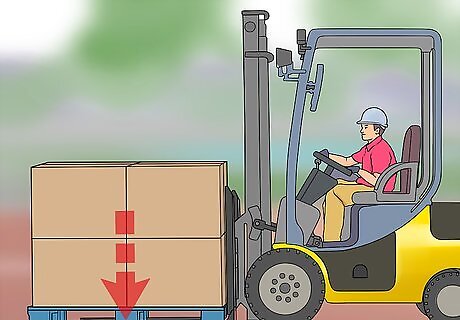
Lower the forks until the pallet is set down. Use the lever on the right side of the steering column to lower the load. Make sure the pallet has full contact with the surface underneath. You should be able to feel the weight of the load come off the forks once it’s set down.Tip: Make sure to lower the load slowly so you don't break or damage anything.
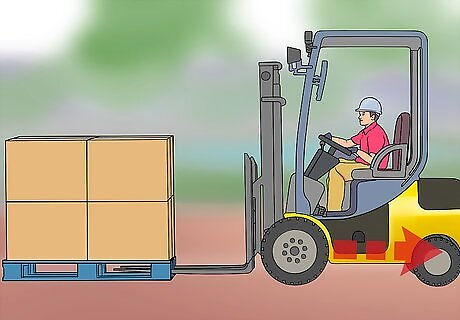
Back straight out from the load to remove the tines. Check behind you to make sure no one is standing there. Shift the forklift into reverse, disengage the parking brake, and use the accelerator to slowly back out from the load. Make sure not to turn or else you could knock the load over. Don’t forget to lower the fork closer to the ground before you start driving again.
Parking the Forklift
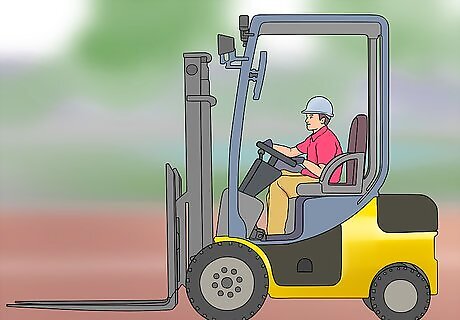
Find a clear, level area and stop your machine. Park in an area that isn’t blocking any exits and has level ground. Press the brake pedal with your left foot to come to a complete stop before shifting gears into neutral. Pull the lever to activate the parking brake. Keep your foot on the brake until the parking brake is fully engaged.
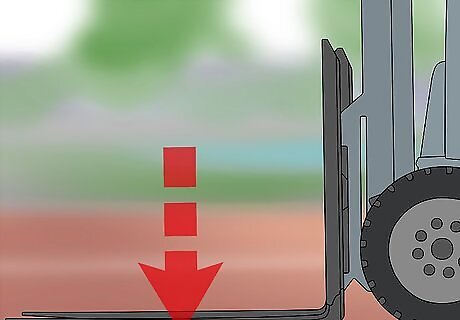
Lower the fork so the ends of the tines are touching the floor. Use the levers on the right side of the steering wheel to adjust the height of the fork. Make sure the tines are on the ground so they don’t create a tripping hazard. Adjust the tilt of the mast with the lever if you tipped it backward while driving.

Turn the key to power down the forklift. Once the fork is completely lowered and the parking brake is engaged, turn the key toward you to stop the engine. When the machine is off, you can get out of the cab.















Comments
0 comment